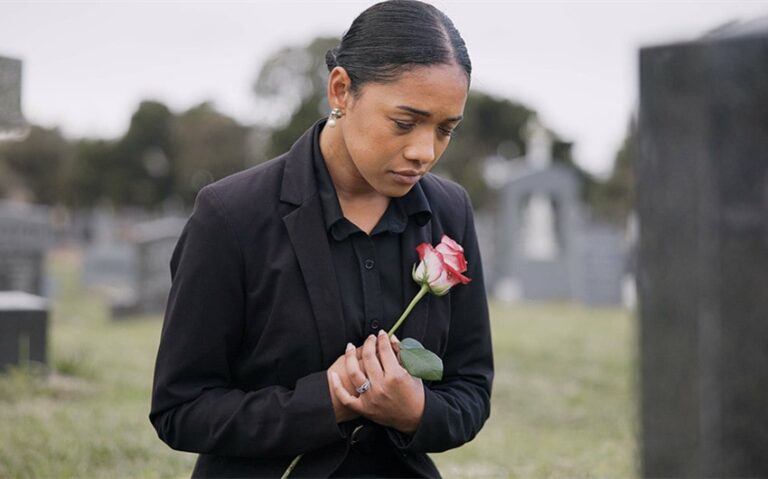Best Ways on How to Apologize Without Saying Sorry
Apologizing can be tricky, especially when “sorry” doesn’t feel like enough or is overused. We all face situations where we need to make amends but want to express ourselves more thoughtfully. Whether it’s with a friend, family member, or at work, finding the right way to admit your mistake without sounding repetitive is key.
Learning how to apologize without saying sorry gives you the chance to take real responsibility and offer a meaningful solution. By using more impactful words and actions, your apology can feel more genuine and create a positive outcome.
Key Elements of a Genuine Apology

Apologizing effectively without using the word “sorry” requires a thoughtful approach, focusing on acknowledging the mistake, showing empathy, and committing to change. Here’s a breakdown of the key elements:
1. Acknowledge the Mistake
The cornerstone of any genuine apology is recognizing that something went wrong. Instead of defaulting to “sorry,” which can sometimes sound automatic, directly acknowledge your specific actions. This helps the other person know that you are aware of exactly what caused the issue.
For example, if you missed an important deadline at work, rather than saying “I’m sorry I missed the deadline,” say something like, “I understand I failed to meet the deadline, and it impacted the team’s progress.” This phrasing shows that you are not just apologizing for the sake of it; you are fully aware of your mistake and its consequences.
When you acknowledge the mistake in clear, specific terms, it conveys that you’ve reflected on the situation and are ready to take responsibility, rather than offering a generic or superficial apology.
2. Express Empathy
Empathy is a critical part of any apology. It involves putting yourself in the other person’s shoes and showing that you understand how your actions affected them. Empathy goes beyond simply acknowledging the mistake; it’s about acknowledging the emotional or practical impact it had on the other person.
Instead of just apologizing, say something like, “I can see how my actions caused you stress and frustration,” or “I understand that this situation was difficult for you, and I regret the part I played in it.” By expressing empathy, you show that you’re not only aware of the situation but also how it made the other person feel.
This emotional connection makes the apology much more meaningful, as it reassures the other person that you care about their feelings. It also helps them feel validated and understood, which can go a long way in mending the relationship.
3. Take Responsibility
Apologizing without “sorry” also means taking full accountability for your actions. This step is crucial because it demonstrates maturity and a willingness to own your mistakes. Taking responsibility shows that you are not trying to deflect blame or make excuses for what happened.
You might say something like, “I take full responsibility for the misunderstanding and the confusion it caused,” or “I recognize that it was my decision that led to this outcome, and I am prepared to fix it.” Statements like these show that you’re owning your part of the situation, which builds trust and credibility.
By focusing on responsibility, you also distance yourself from defensive responses like, “I didn’t mean to do that,” which can make apologies feel insincere. Instead, taking ownership of your role in the problem allows the other person to see your sincerity and willingness to make things right.
4. Offer a Solution
One of the most effective ways to apologize without saying “sorry” is to offer a solution to the problem. This is where your apology can move from words to actions, showing that you are not only aware of the mistake but are also ready to resolve it.
Instead of simply stating regret, say something like, “Here’s what I’m going to do to fix the issue,” or “Let me take care of this by doing X, Y, or Z.” For example, if you made an error in a project, you could offer, “I’ll work extra hours this week to ensure the final version meets expectations.” Offering a solution demonstrates that you are proactive and committed to making amends.
It’s important that your proposed solution is specific and actionable. Generic offers like “I’ll fix it” don’t carry as much weight as concrete plans. By offering a tangible solution, you show that you’re not just paying lip service to the problem—you’re taking steps to address it and ensure it doesn’t happen again.
5. Commit to Change
A key part of any meaningful apology is a commitment to do better in the future. This helps reassure the other person that the issue will not be repeated. Apologizing without “sorry” in this case involves clearly stating how you plan to change your behavior or approach to prevent similar mistakes from happening again.
You might say, “Moving forward, I’ll make sure to communicate more clearly so this doesn’t happen again,” or “I’ll take extra care to review my work in the future.” These statements highlight your intention to improve and demonstrate that you are taking the situation seriously enough to make lasting changes.
Committing to change not only reinforces your apology but also helps rebuild trust. The other person knows that you’ve learned from the mistake and are actively working to grow from it. A clear plan for how you’ll do things differently also shifts the focus from the past mistake to a better future, which can strengthen relationships both personally and professionally.
Phrases to Apologize Without Saying “Sorry”

Using thoughtful phrases is an essential part of apologizing without relying on the word “sorry.” These phrases allow you to express regret, take responsibility, and offer solutions without sounding overly repetitive or insincere. Here are some examples of phrases you can use in various situations to effectively apologize without using the word “sorry”.
For Personal Life and Relationships
- “I didn’t handle that the way I should have, and I regret it.”
- “I understand how you feel, and I’m going to do better.”
- “I know my actions hurt you, and I want to make things right.”
- “I realize I wasn’t considerate, and I’m committed to improving.”
- “I can see the pain I caused, and I want to make amends.”
- “I acknowledge my mistake, and I’m ready to make it right between us.”
- “I understand how my actions affected you, and I’ll work on being better.”
- “I know I let you down, and I want to rebuild the trust.”
- “I recognize that I was wrong, and I’m taking responsibility.”
- “I see how much this upset you, and I’ll do everything I can to fix it.”
For Professional or Work Settings
- “I take full responsibility for the issue and will address it promptly.”
- “I understand the impact of this mistake and will correct it immediately.”
- “I didn’t meet expectations, and I’m working on a solution.”
- “I see where the problem occurred, and I’m committed to resolving it.”
- “I’ll ensure this doesn’t happen again and will take necessary steps to improve.”
- “I recognize the oversight and am actively working on fixing it.”
- “I take ownership of this error and am working toward a solution.”
- “I understand the inconvenience this caused, and I’m making it right.”
- “This didn’t go as planned, and I’m taking action to correct it.”
- “I’m addressing the situation and will follow up with a resolution shortly.”
For Friendships
- “I understand how this affected you, and I want to make it right between us.”
- “I see how my actions hurt you, and I’ll do better going forward.”
- “I realize I didn’t support you as I should have, and I want to fix that.”
- “I value our friendship, and I want to address where I went wrong.”
- “I didn’t show up for you the way you deserved, and I’m ready to make it right.”
- “I know I let you down, and I want to do better as a friend.”
- “I recognize that I wasn’t there when you needed me, and I’m committed to being better.”
- “I understand the frustration I caused, and I want to rebuild our friendship.”
- “I didn’t treat you fairly, and I want to take steps to change that.”
- “I know I hurt your feelings, and I’m going to work to make amends.”
Non-Verbal Ways to Apologize Without Saying “Sorry”

Apologizing isn’t always about the words you say; your actions can sometimes speak louder and be more meaningful than a verbal apology. Non-verbal ways of apologizing demonstrate genuine regret, empathy, and the willingness to make amends. Here are some effective non-verbal approaches to apologizing without relying on the word “sorry”:
1. Acts of Service
Showing remorse through helpful actions is one of the most powerful ways to apologize. Doing something thoughtful or useful for the person can demonstrate that you’re genuinely trying to make things right. For example, if you hurt a friend, offering to help them with something important or doing a kind favor can show that you’re invested in making up for the mistake.
In relationships, this could mean cooking a favorite meal or taking care of a chore they dislike. In professional settings, it could involve taking on extra work to ease the burden caused by your mistake.
Acts of service reflect your commitment to repair the damage and signal that you value the relationship.
2. Genuine Listening
Listening without interrupting is an important non-verbal way to apologize. Sometimes, the best way to show you’re truly sorry is by giving the other person space to express how they feel. By actively listening and acknowledging their emotions, you create a space for them to feel heard, which is often what they need more than a simple “sorry.”
This means being fully present, maintaining eye contact, and showing empathy through your body language. Nodding to show understanding and asking open-ended questions like “How did this affect you?” can help demonstrate that you’re genuinely invested in their feelings and are ready to improve.
3. Small Gestures of Kindness
Thoughtful gestures can go a long way in apologizing. Sending a handwritten note, leaving a small gift, or doing something that the person appreciates can show that you’re thinking of them and regret your actions. These gestures may seem small, but they often have a lasting impact and can help heal emotional wounds.
For example, you could leave a note on someone’s desk or send them a heartfelt message without directly saying “sorry,” but letting them know you’re thinking of them and working to mend the relationship. These actions communicate that you care and are making an effort to show it.
4. Giving Space and Time
Sometimes, the best non-verbal apology is allowing the other person some space and time to process their emotions. Apologies can be rushed, but giving someone the opportunity to cool down and reflect can be just as important as apologizing itself.
During this time, your non-verbal signals of respect—like not pressing the person to accept your apology immediately, respecting their boundaries, or giving them time to come back to the conversation—can show that you care about their feelings and are willing to wait for the right moment to discuss the issue further.
5. Physical Presence and Support
Simply being there for the person after a conflict can be a powerful way to apologize non-verbally. Staying close, offering emotional or practical support, and showing that you care through your presence can communicate that you’re invested in resolving the situation.
Whether it’s sitting with someone in silence, offering a hug when they’re ready, or simply standing by them during difficult moments, your physical presence can be a meaningful way to show you’re making amends. Actions like this convey that you’re there to support them emotionally without needing to vocalize your apology.
6. Correcting the Mistake
Taking immediate action to fix what went wrong shows that you are genuinely committed to making amends. For example, if you made an error at work, correcting the mistake swiftly and efficiently—without drawing attention to yourself—can show that you’re serious about improving the situation.
In personal relationships, this could involve addressing the cause of the conflict directly, such as making amends for forgetting an important event by organizing something special as a way to make it up to them. Fixing the problem you caused often shows much more than words ever could.
7. Body Language
Your body language speaks volumes when you’re apologizing. Non-verbal cues like maintaining eye contact, offering a genuine smile, or softening your tone can help convey your apology without words. Avoid crossing your arms or looking away, as these behaviors can signal defensiveness or insincerity.
Open, relaxed body language, such as leaning slightly forward and showing attentiveness, demonstrates that you’re engaged in the apology and fully aware of the other person’s emotions. A warm handshake or gentle pat on the shoulder can also reinforce your desire to reconnect positively.
8. Making Positive Changes
One of the best ways to apologize non-verbally is through behavioral change. Demonstrating that you’ve learned from your mistake and are committed to changing your actions speaks volumes. This could mean avoiding behaviors that caused the issue in the first place or implementing better habits to prevent it from happening again.
For example, if you were consistently late to meetings, showing up on time consistently afterward reflects a genuine effort to correct the behavior. Over time, these positive changes show the other person that you’re serious about making things right and improving your relationship.
9. Offering Thoughtful Acts Related to the Problem
If your mistake caused inconvenience, one of the most effective non-verbal apologies is to directly relieve that inconvenience. If you caused someone extra work, for example, offering to assist them in completing the task or doing something in return shows accountability. It’s not just about what you say, but how you act to undo the harm.
This gesture shows that you’re thinking about their needs and making a real effort to ease the situation. It signals that you’re taking responsibility beyond just words.
10. Consistency in Actions
Over time, consistently showing better behavior through your daily actions can be the most meaningful form of apology. Whether in personal or professional contexts, your commitment to being reliable, responsible, and considerate shows that you’ve learned from the past and are actively working to improve.
Consistency in your improved actions builds trust and communicates that your apology wasn’t just a one-time gesture but a long-term change in how you approach your relationships or responsibilities.







